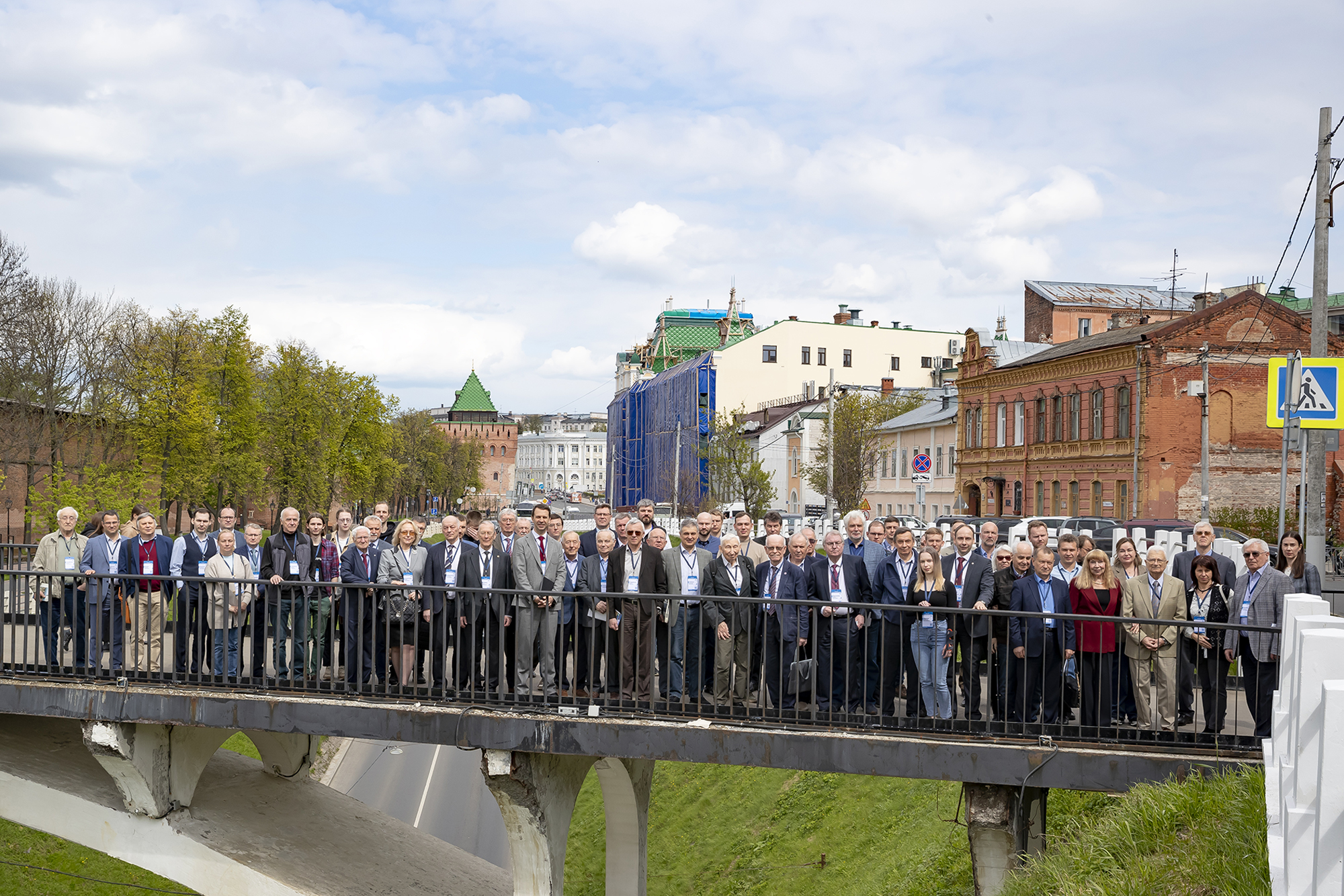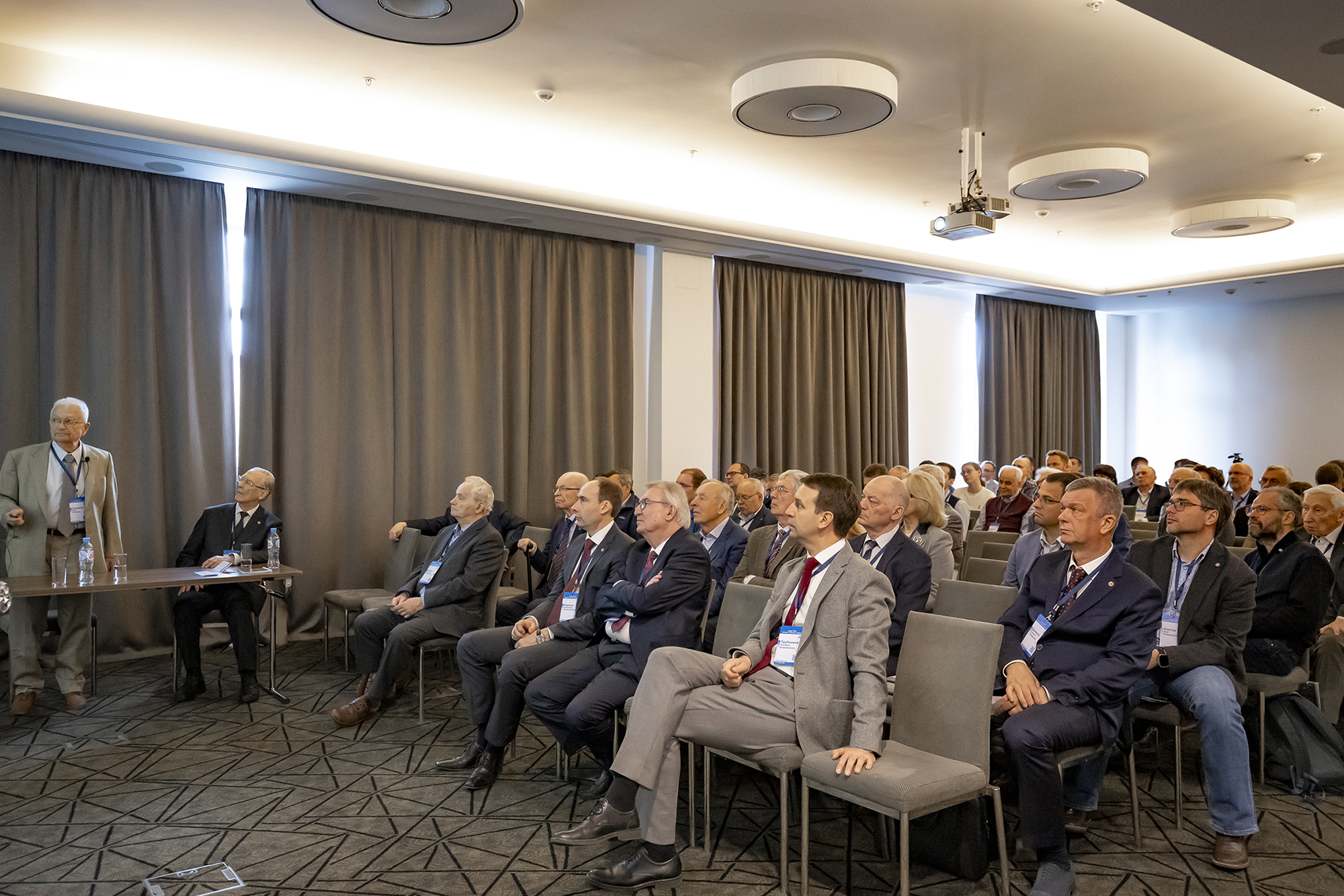10th meeting of RAS Council on Heavy Ion Physics starts
News, 15 May 2024
On 14–17 May, Nizhny Novgorod is hosting the tenth meeting of the Scientific Council of the RAS Physics Division on Heavy Ion Physics, entitled “Relativistic Nuclear Physics and Heavy Ion Physics”, organized by the Joint Institute for Nuclear Research and the Institute of Applied Physics of the Russian Academy of Sciences (IAP RAS). The meeting was attended by representatives of the Russian Federal Nuclear Centre (Sarov), Research Institute of Atomic Reactors (Dimitrovgrad), Electrohimpribor Integrated Plant (Lesnoy), Efremov Institute of Electrophysical Apparatus (NIIEFA, Saint Petersburg), National Centre for Physics and Mathematics (Sarov), Saint Petersburg State University. Over the course of four days, participants will discuss ways and means of solving the problems of nuclear physics, the results and prospects of scientific research, and plans for the implementation of major scientific projects and the construction of the infrastructure they require. The Flerov Prize laureates were awarded on the first day of the meeting.
Chairman of the Council, Scientific Leader of the Laboratory of Nuclear Reactions at JINR, Academician Yuri Oganessian gave an introductory speech.
“National laboratories in advanced countries around the world use heavy ions to study various objects in the field of natural science. Almost 75 years ago, nuclear physics, a new direction at the time, started to evolve into new branches of science, such as atomic physics, nuclear chemistry, and astrophysics. We have gathered today to discuss the results and plans for future research in these areas,” Yuri Oganessian said.
IAP RAS Director, Academician Grigory Denisov and JINR Scientific Leader, Academician Victor Matveev welcomed the guests as well.
Grigory Trubnikov, Director of the Joint Institute, RAS Academician, made a report on the JINR physics programme. According to the report of the International Union of Pure and Applied Physics (IUPAP), one of the most important projects for global science are the Institute’s NICA Accelerator Complex (Nuclotron-based Ion Collider fAcility), the Superheavy Element Factory, and the Baikal-GVD Neutrino Telescope. As Grigory Trubnikov noted, this is a highly significant achievement for Dubna as an international scientific centre. The academician outlined the main milestones in the history of nuclear physics at JINR.
“In 1960, a unique heavy ion accelerator, the U-300 Cyclotron, was created at the Laboratory of Nuclear Reactions at JINR, with Yuri Oganessian partaking in its commissioning. For decades, this facility has defined the heavy ion physics programme. In 80s and 90s, two new cyclotrons, the U-400 and U-400M, were launched. They were later connected by a channel for transporting heavy ions into a single cyclotron complex to work not only with stable, but also exotic radioactive nuclei,” the Director of the Joint Institute highlighted.
In the late 2000s, the decision was made to develop a heavy ion physics programme and create a unique complex of superconducting rings on colliding heavy ion beams, which was titled NICA. The megascience project aims at studying phase transitions of nuclear matter and exploring the possibility of recreating a density of matter exceeding the normal nuclear density for a short time at certain energies of colliding particles. As part of the NICA’s scientific programme, researchers are studying the internal nuclear structure in experiments.
Today, more than 1000 people are taking part in research activities at the NICA Complex. The experimental results the scientists achieved have been published in international journals. The necessary technological tests of the complex components are to be completed during 2024, and the launch of the first ion beam in the collider is scheduled for early 2025.
In 2020, the Superheavy Element Factory was launched at FLNR at JINR. The new accelerator complex is designed for the investigation of the nuclear matter stability limits, synthesis of new elements of the Periodic Table, and study of their chemical properties. The main goal is to try to synthesise elements 119 and 120 together with the international community.
Among the Laboratory’s achievements in heavy ion research the Director noted the studies of reactions for the synthesis of elements 110 (darmstadt), 112 (copernicium), 114 (flerovium), and 115 (moscovium), the production of six new isotopes, and studies of the chemical properties of elements of the Mendeleev Periodic Table, performed at the Superheavy Element Factory, a FLNR flagship project.
One of the main tasks of the Laboratory of Nuclear Reactions is the creation of high-intensity ion sources. Together with Efremov Institute of Electrophysical Apparatus and colleagues from the IAP RAS, the Institute is creating a 28 GHz ECR (electron cyclotron resonance) source and an ion source for the MSC-230 Cyclotron. It is expected that the operation of the upgraded U-400M Cyclotron will be resumed in the summer of 2024. The construction of a new experimental hall of the U-400R Accelerator Complex continues. Its main area of research will be the synthesis of superheavy elements. The issue of creating a factory of radioactive nuclei for the study of secondary beam physics and the production of monoenergetic ions is being actively discussed.
In addition, JINR conducts applied research in medicine, radiobiology, and materials science as part of the project of the Laboratory of High Energy Physics at JINR titled ARIADNA (Applied Research Infrastructure for Advance Development at NICA fAcility) at SOCHI, ISCRA, SIMBO Facilities. The construction of the DC-140 Cyclotron, which will allow researchers to extract beams of accelerated ions from oxygen to bismuth, is finishing at FLNR. JINR is also developing a new MSC-230 Superconducting Proton Accelerator in cooperation with Rosatom. It is designed for proton flash therapy of patients with cancer and the implementation of a wide range of biomedical research.
At the end of his talk, Grigory Trubnikov outlined the key issues of physics that should determine the development of new facilities and programmes in nuclear science and spoke about the prospects for the study of heavy ion physics.
Yuri Oganessian presented the programme of the meeting and made an overview report on the Superheavy Element Factory, describing the goals, results, and plans for research in the field of heavy ion physics. In his report, Academician Oganessian paid special attention to the national project titled “Atom and New Energy Technologies”, implemented by a consortium of Rosatom institutes and JINR.
In addition, the ceremony of awarding the international Flerov Prize for outstanding work in nuclear physics and nuclear chemistry took place. This year’s laureates are:
- Radiy I. Ilkaev, co-author of the discovery of element 114 (flerovium), for his great contribution to the synthesis and study of the properties of superheavy nuclei;
- Evgeny D. Donets, co-author of the discovery of elements 102 (nobelium) and 103 (lawrencium), for creating sources of highly charged ions for the production of intense medium and high energy beams;
- Evgeny E. Donets, Head of the Electron Beam Ion Source Sector at VBLHEP at JINR, for creating sources of highly charged ions for the production of intense medium and high energy beams;
- Zhao Hongwei, Deputy Director at the Institute of Modern Physics of the Chinese Academy of Sciences, for creating sources of highly charged ions for the production of intense medium and high energy beams.
In accordance with the programme of the event, participants from research centres and universities, as well as scientists from Rosatom organizations, will present more than 30 scientific reports on low and high energy heavy ion physics and applied research. On the final day, representatives of the IAP RAS will talk about the main areas of research and new projects of the Institute.










